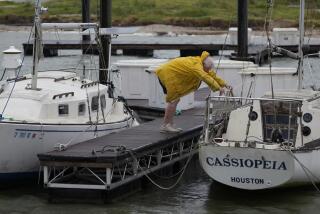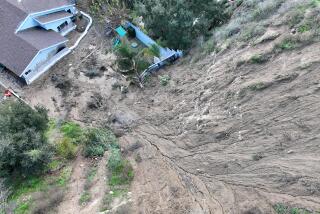Op-Ed: How Houston can prevent Harvey-like disasters in the future
An unprecedented amount of rain has fallen on the Houston area in the last few days, causing whatâs likely the worst flooding event that the nationâs sixth-largest metropolitan area has ever experienced â even worse than 2001âs Tropical Storm Allison.
This may seem like a freak occurrence. But itâs the third catastrophic flooding event this region of 6.5 million people has experienced in three years. And scientists and other experts say that much of the devastation could have been prevented. While the Houston areaâs history is punctuated by major flooding events, they argue that local officials â under political and legal pressure from developers â have dug themselves into a hole for decades by flouting smarter development policies. They say local officials need to account for more frequent and intense rains that are sure to come with climate change, rather than looking to what has happened in the past in their search for solutions.
Hereâs what local leaders could have done to protect the region â and what they must do to prevent such disasters in the future.
Preserve and restore as much prairie land as possible
Much of northwest Houston used to be prairie, where tall grasses could absorb huge amounts of floodwater. But most of it has been paved over in the last two decades amid rapid development and a massive influx of people. Between 2000 and 2010, this part of Houston grew by nearly 70% to a population of 587,142 â equivalent to that of Milwaukee. Restoring or preserving prairie canât prevent flooding altogether, but it can be a tremendous help in mitigating the damage.
People who move to flood-prone areas are often unaware of the risks.
Some local officials flat-out disagree with this conclusion; they believe you can erect public works projects to catch and manage runoff â essentially fighting water with concrete â and donât need more green space.
But the vast majority of scientists believe the region needs to impose stricter regulations on those who want to develop prairie land.
Restrict development in flood plains and buy flood-prone homes
Buildings continue to go up in vulnerable flood plains all over Harris County. A few years ago the city of Houston tried to ban new development in the most flood-prone areas. But developers sued, and the policy was severely weakened by the City Council. Although some have chosen to elevate their lots to protect homes and businesses from rising floodwaters, that strategy may only increase the flood risk for those around them.
Local officials also have pursued some buyouts â purchasing homes that have been badly damaged by floods or that are known to flood repeatedly. But Harris County hasnât done enough. The county will need a lot more money to buy out more homes, and local owners will have to be willing to move.
Plan for climate change
In planning for flooding from future storms, local officials largely look to past rainfall totals and weather patterns. But climate change will heighten the risks that the region already faces. Thatâs particularly true because it sits so close to the Gulf of Mexico, where sea levels are rising and waters have been warming as the planet gets hotter. Warm water means more evaporation and more water vapor in the air â so when a storm comes along, thereâs more water to pick up and dump on nearby land. This is exactly whatâs happening with Tropical Storm Harvey.
âThe exact same storm that comes along today has more rain associated with it than it would have 50 or 100 years ago,â renowned climate scientist Katharine Hayhoe told the Texas Tribune last year. Hayhoe said Houston needs to plan for more frequent and intense rainstorms, just like many other cities in the country. But local county officials have previously said they have no intention of doing so.
Educate the public
Hundreds of thousands of people have moved to the Houston area in recent decades; itâs consistently ranked as one of the nationâs fastest-growing cities. But people who move to flood-prone areas are often unaware of the risks. They purchase homes in low-lying areas and assume that if theyâre not in the 100-year flood plain, they wonât flood. But homes often flood outside flood plains in Houston â and real estate agents donât always tell homebuyers that.
Some past efforts the city made to educate Houstonians have been met with pushback. A few years ago, government officials put up visible flood gauges in low-lying coastal areas meant to show how high the water could rise during hurricanes, but real estate agents revolted and the signposts were removed. Local officials need to be willing to tell their constituents some hard truths.
Kiah Collier is a reporter for the Texas Tribune. Neena Satija is a reporter for the Texas Tribune and Reveal.
Follow the Opinion section on Twitter @latimesopinion or Facebook
MORE FROM OPINION
Harvey shows that Americans can still rise above politics
Can Trump be impeached for pardoning Arpaio?
Republicans are asking a horrific question: Is our president insane?
More to Read
A cure for the common opinion
Get thought-provoking perspectives with our weekly newsletter.
You may occasionally receive promotional content from the Los Angeles Times.










